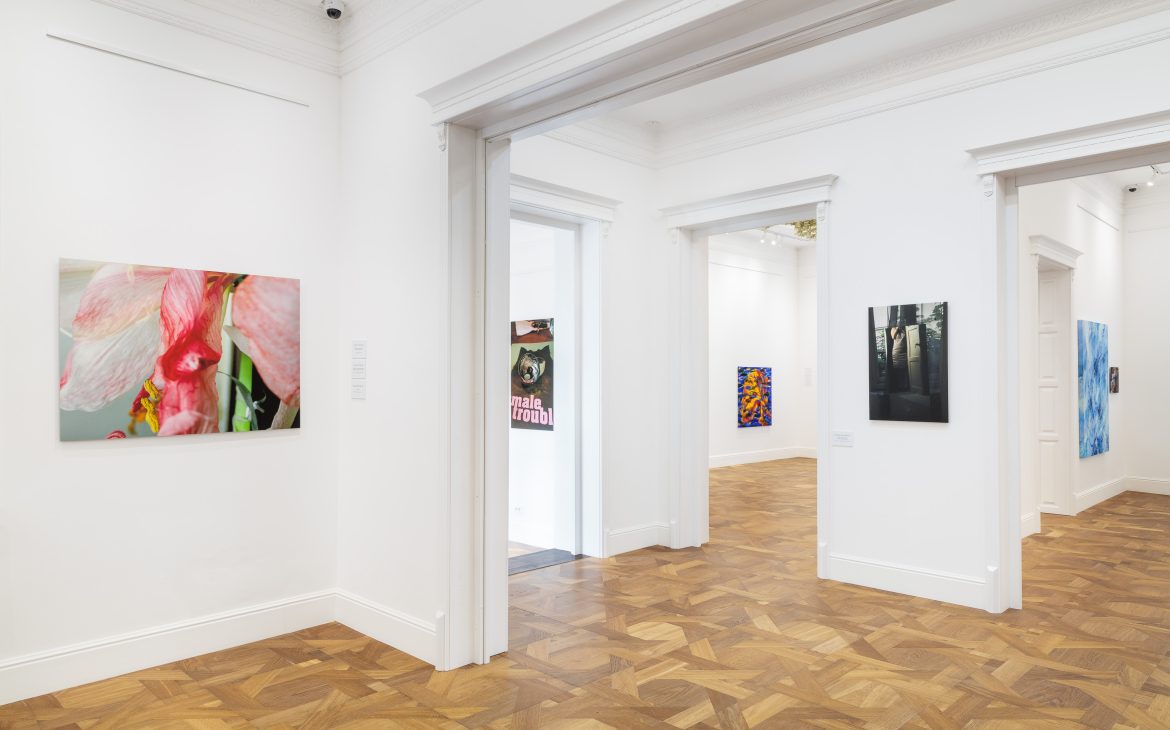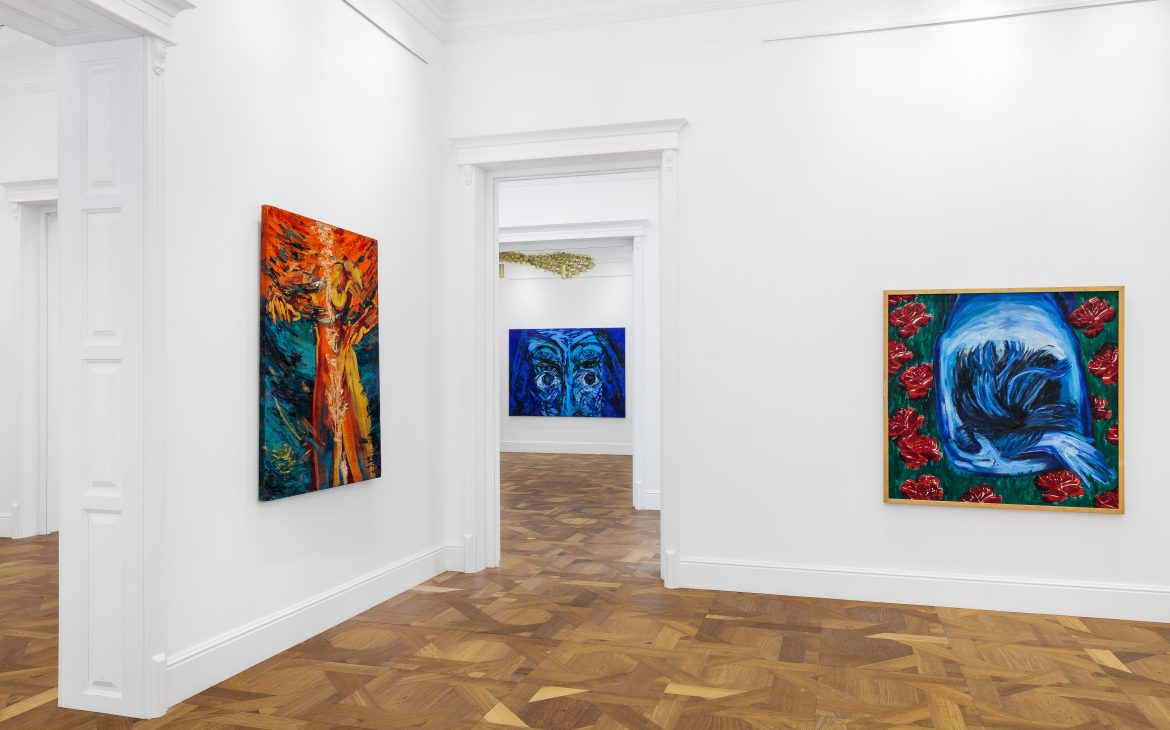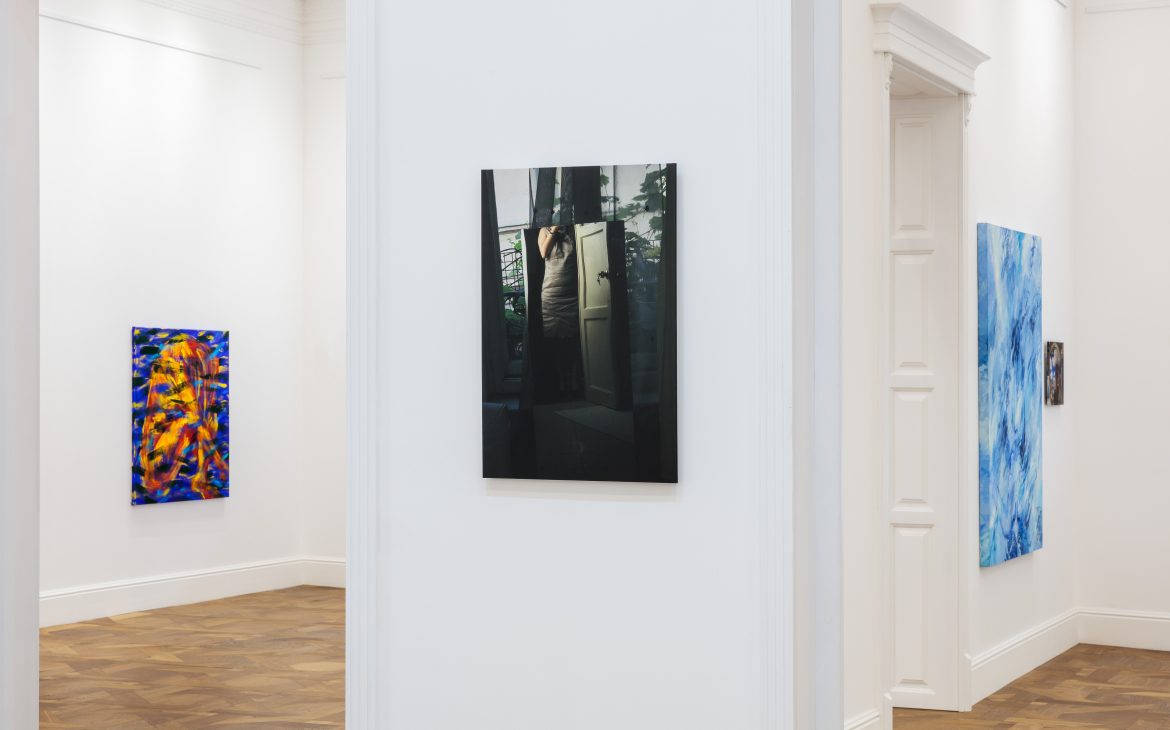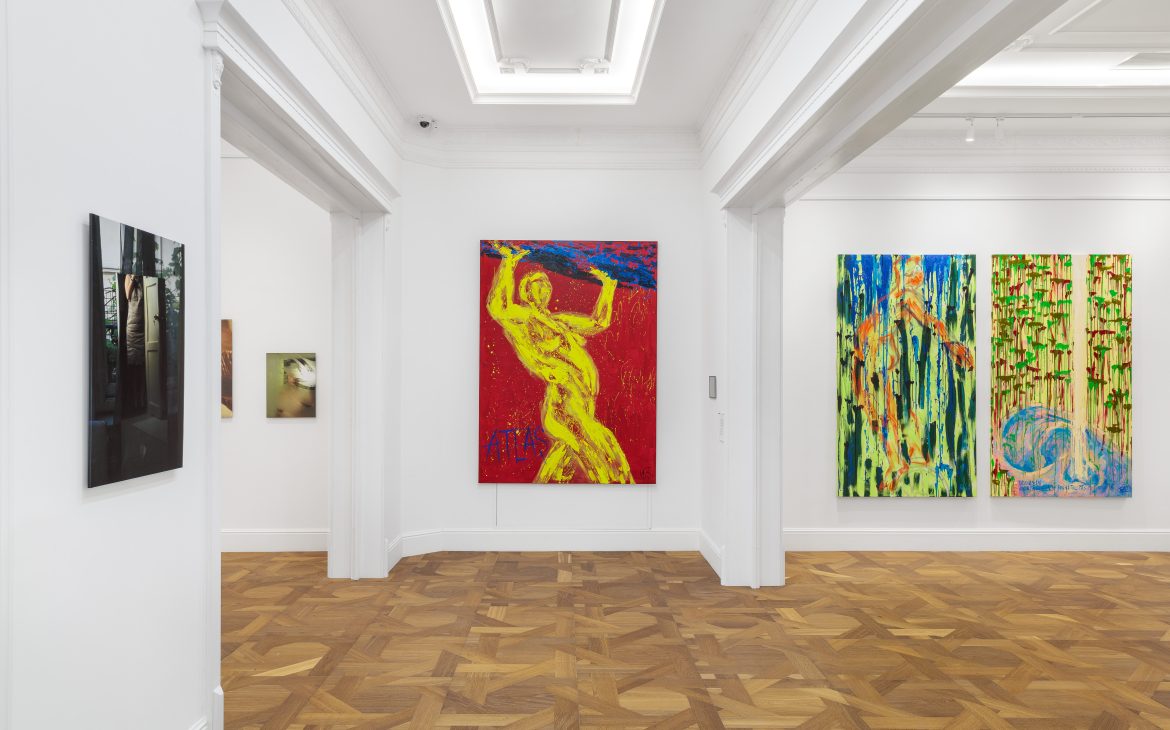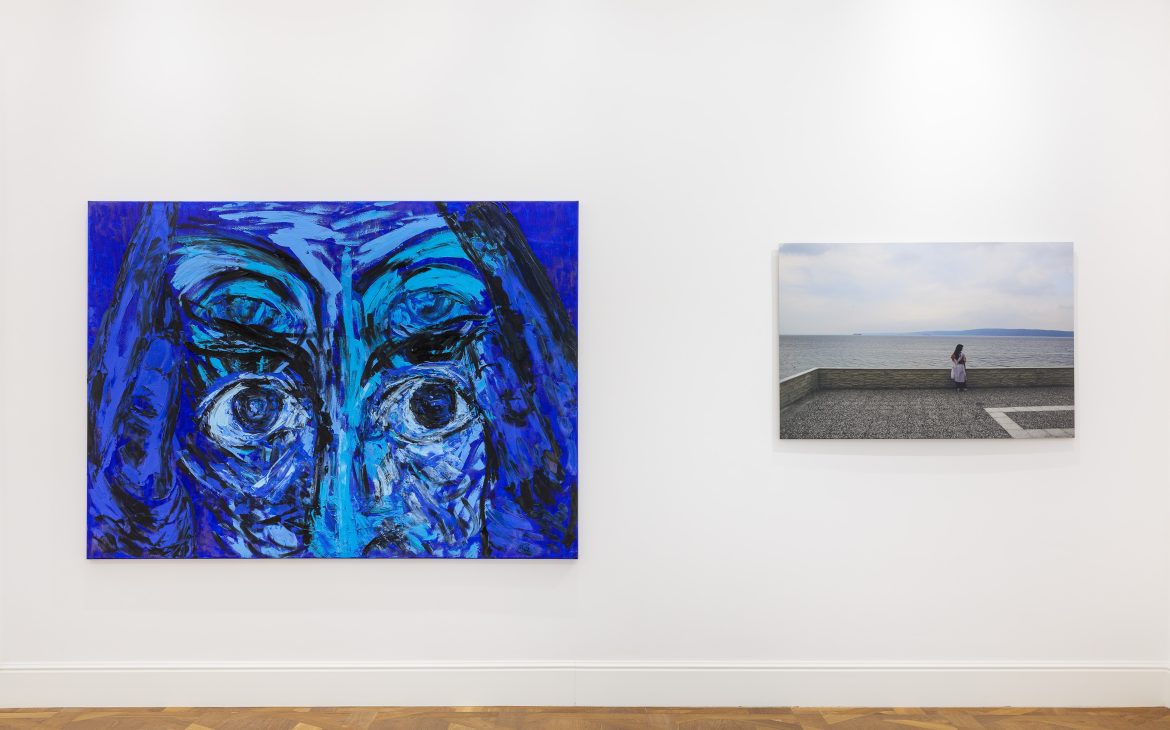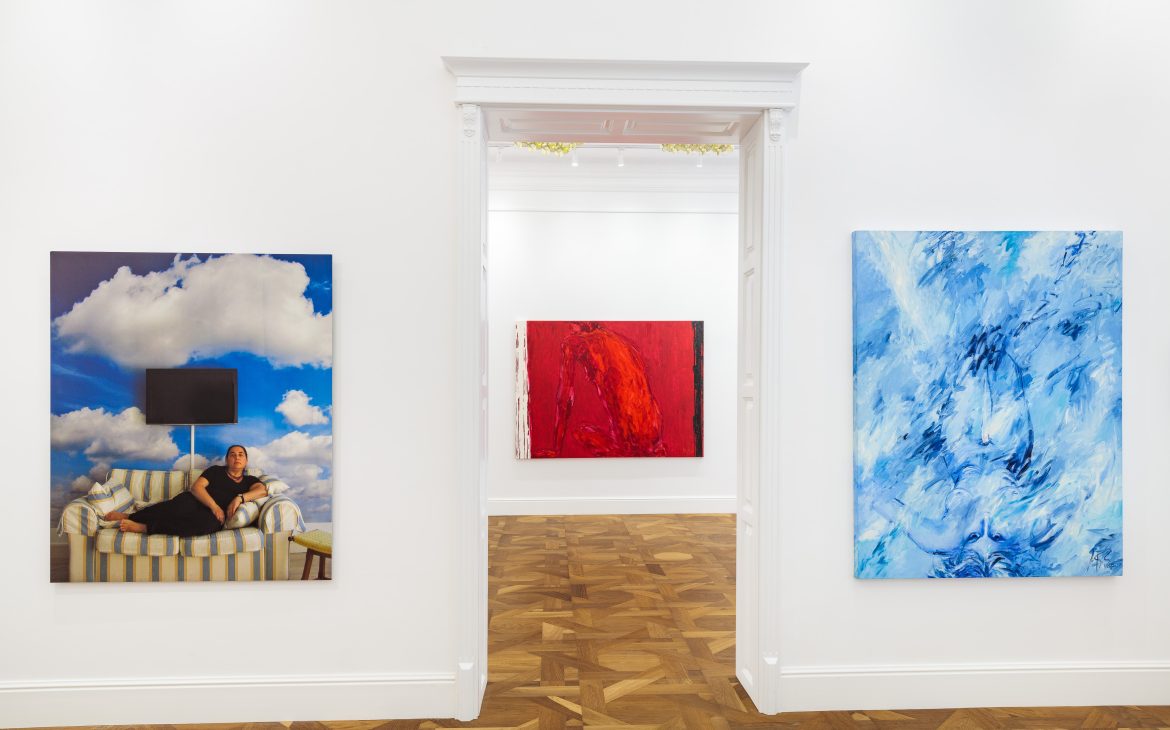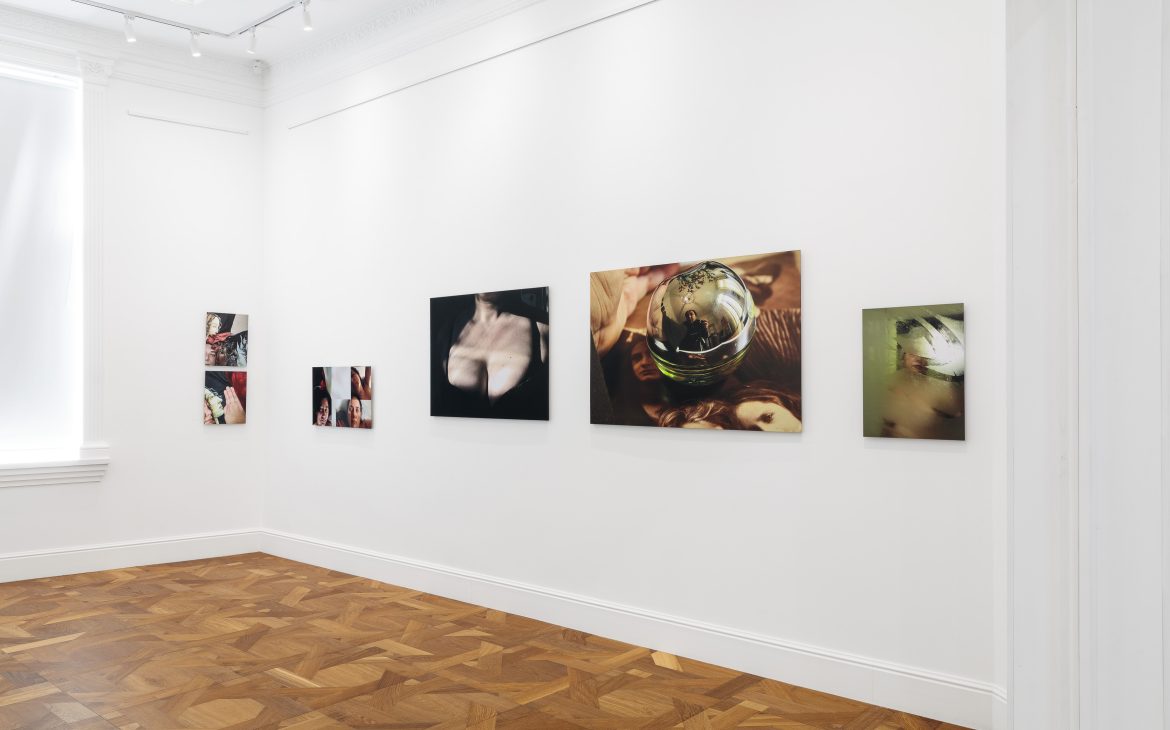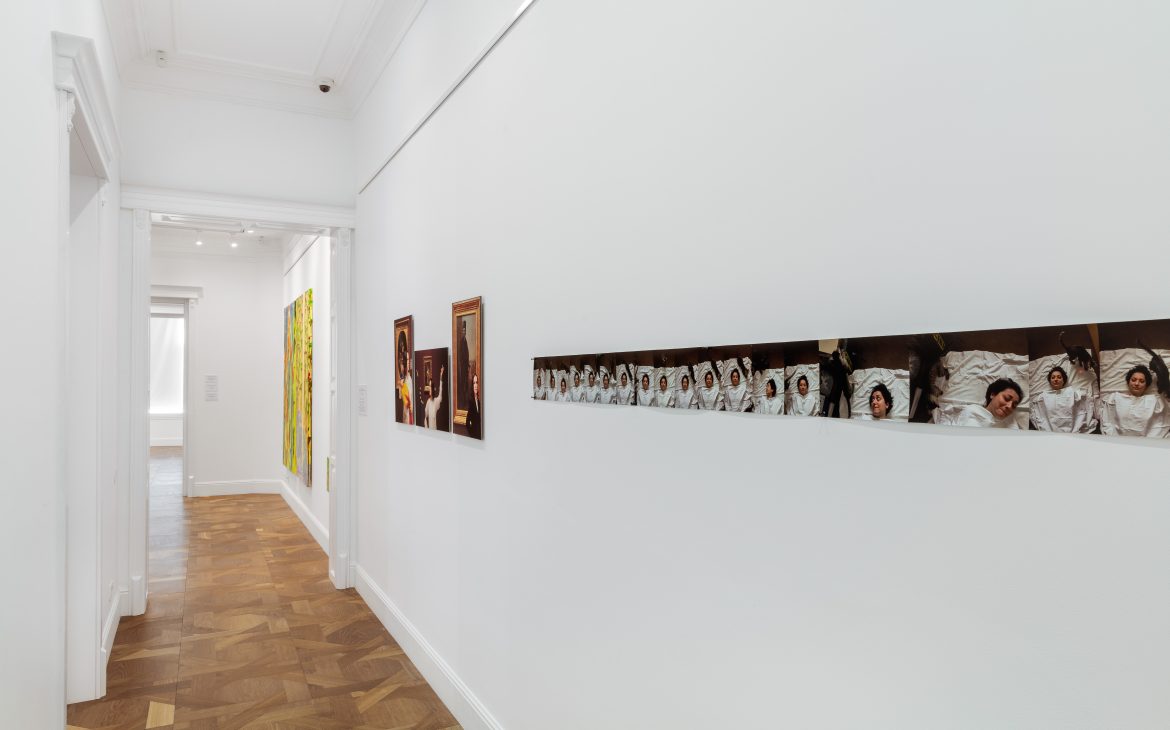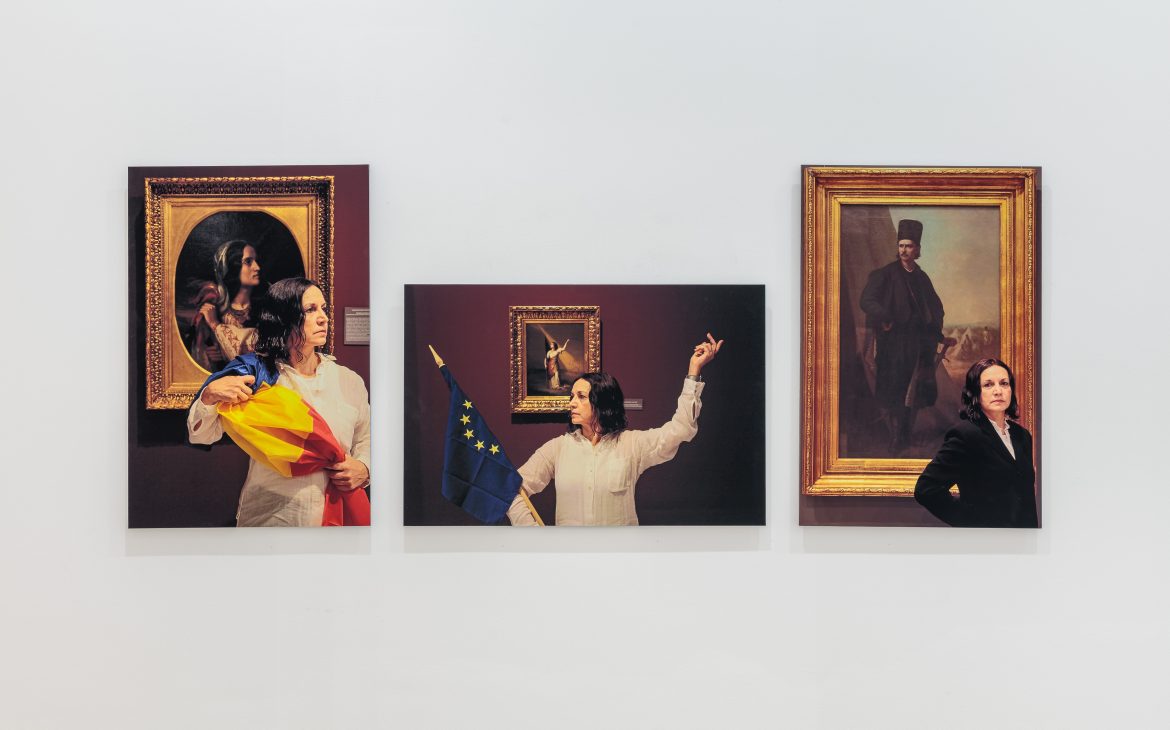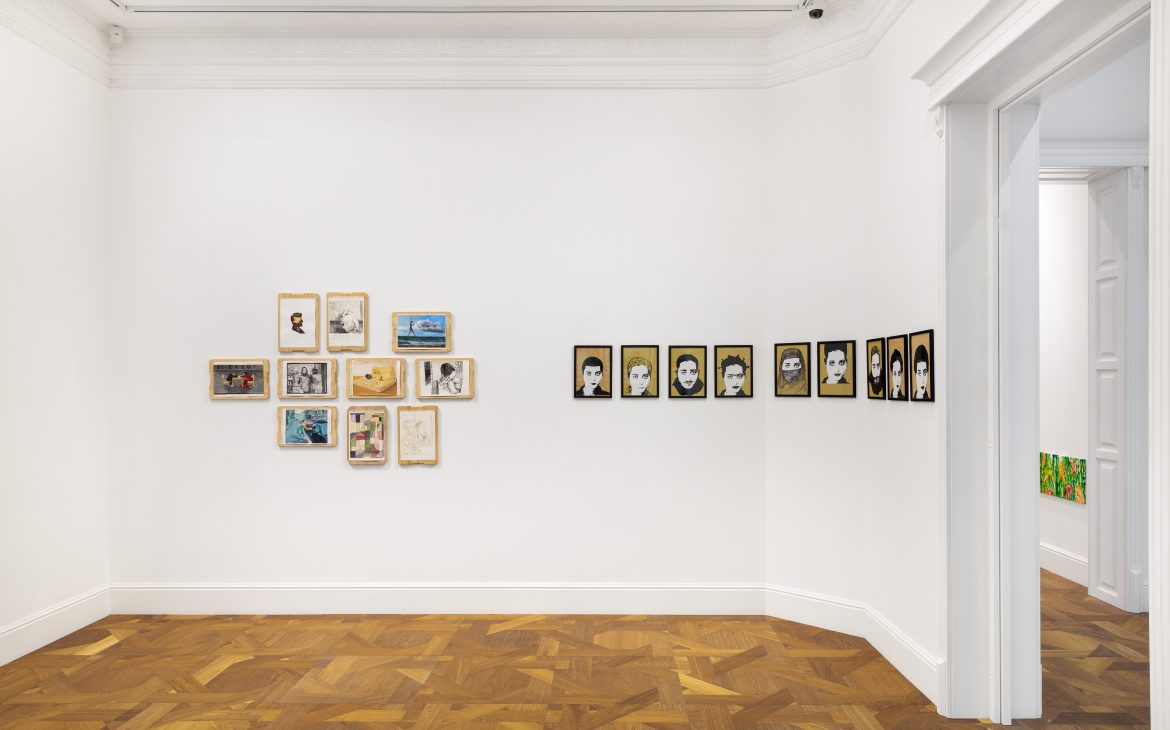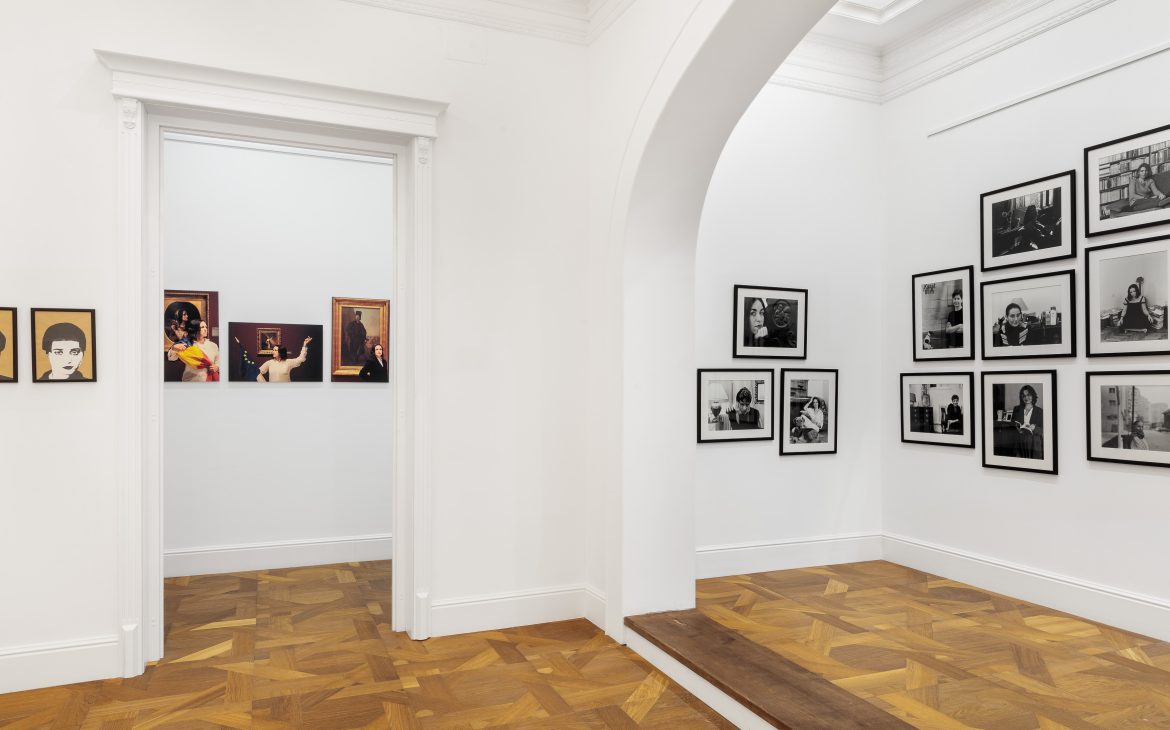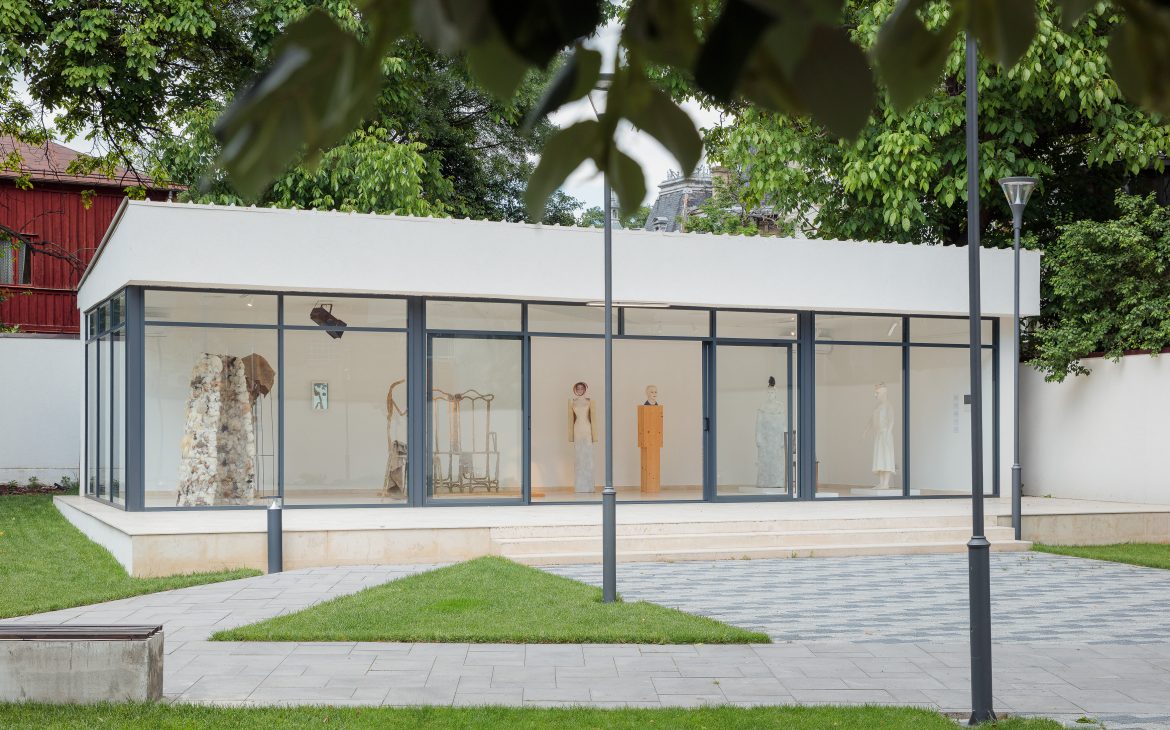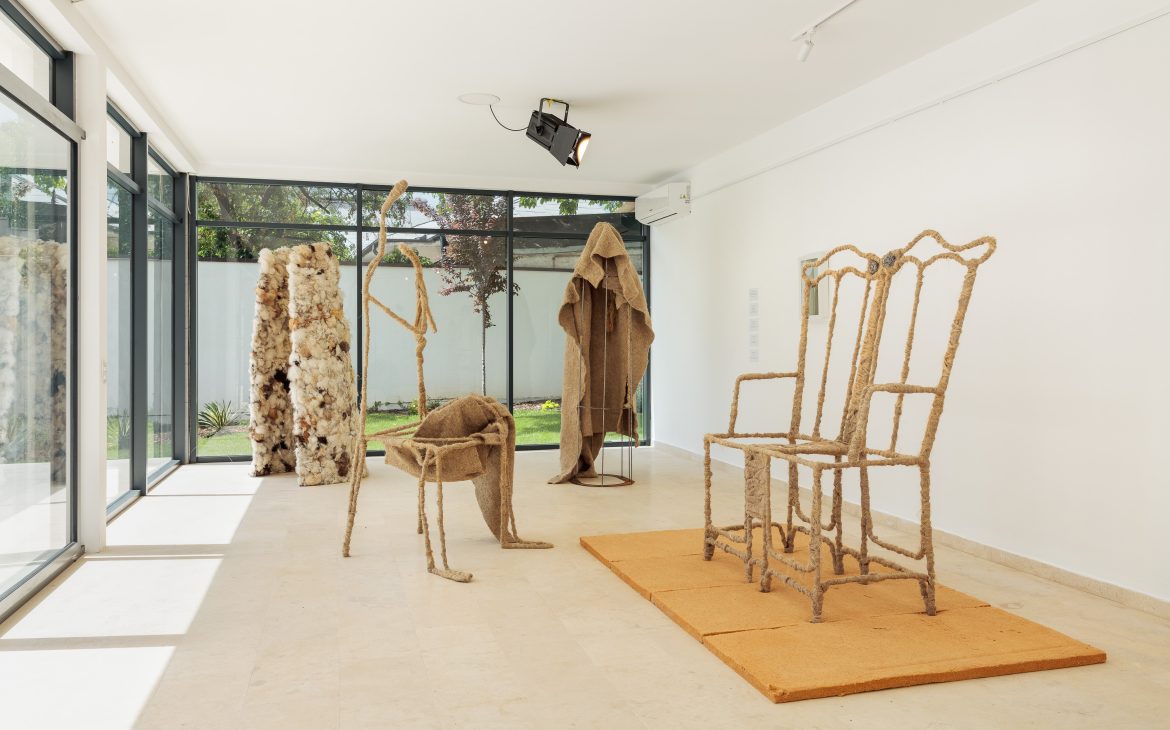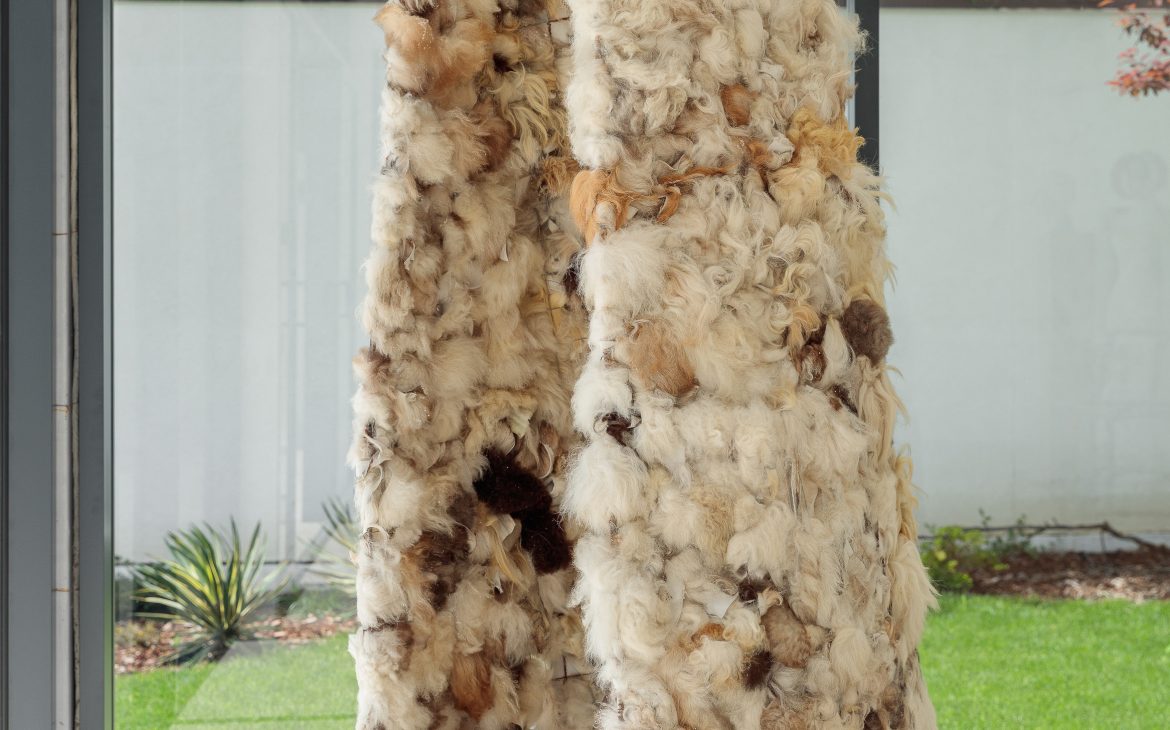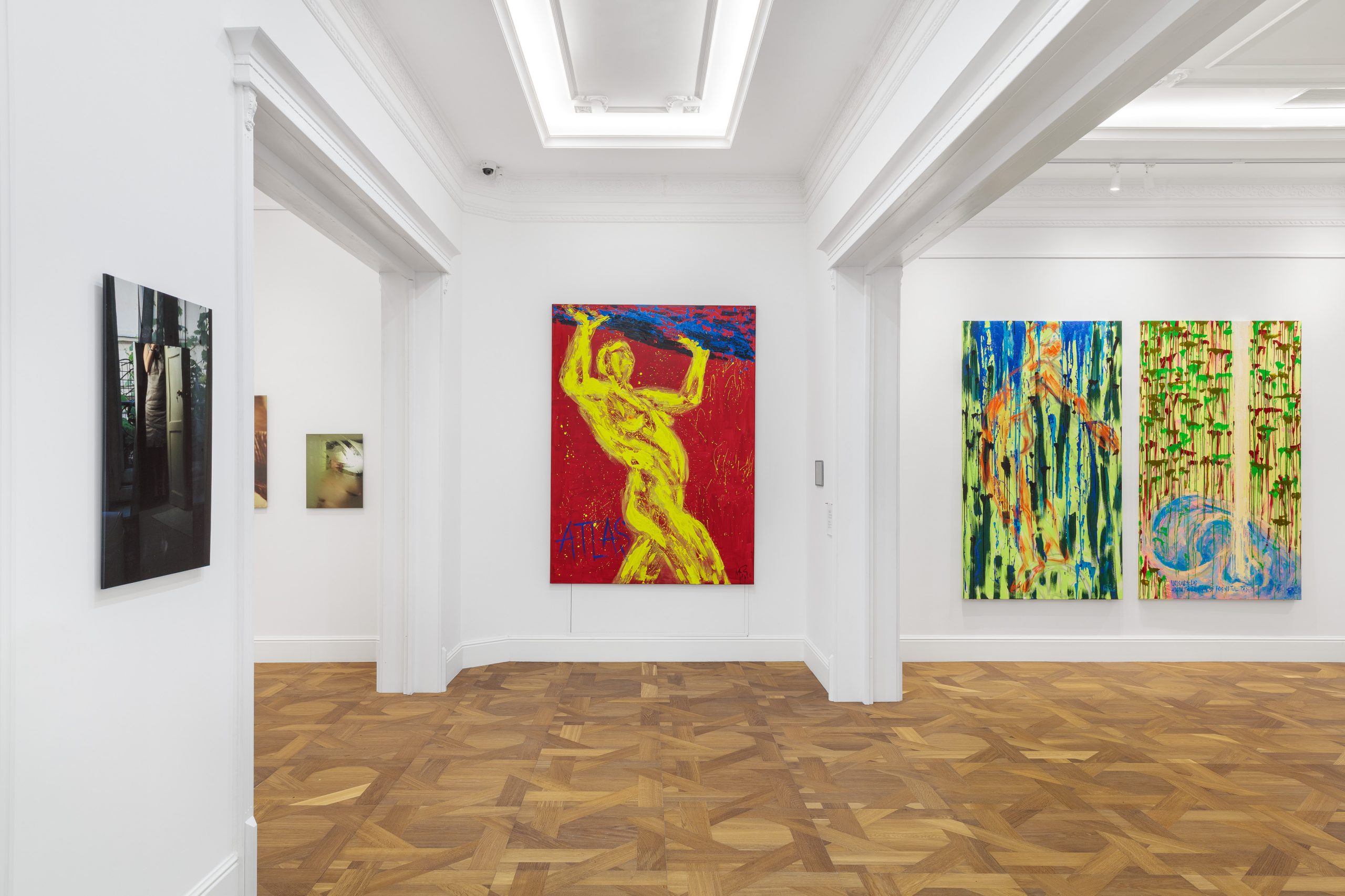GLORIÆ Art Gallery, the first private art gallery in Craiova, is hosting the collective exhibition “Feminine Archaeologies”, an event that presents paintings by Marilena Preda Sânc, photographs by Roxana Trestioreanu, photographs and graphics by Aurora Király, as well as sculptures by Elena Scutaru.
The curatorial project aims to critically revisit the feminine/feminist tension in Romanian visual culture, starting from the premise that femininity remains the most problematic theme of feminist theory. As Griselda Pollock argued, given that the feminine is composed as a paradigm of alterity, its volatility escapes any conceptual localization. Thus, the four artists explore/exploit their own body, portrait and self-portrait, in an attempt to affirm the right to recognize and exhibit feminine specificity. Working in different media, their works reflect, as Marilena Preda-Sânc stated in 2013, “feminist issues centered on the female body, understood as a spiritual, cultural, social universe of gender and as a space of individual, familial, collective memory”, the body transforming into an “image/a place of freedom, a redefinition of female identity.”
On the other hand, in each case, there is a retrospective dimension, more explicit in Aurora Király, who exhibits the series of early self-portraits Kaleidoscop (1998) and the remarkable project Feminine Archaeology, realized in 2000 together with Magda Cârneci — which, incidentally, inspired the very title of the present exhibition. It is an implicit dimension in Elena Scutaru, who last year resumed works made between 1995-1997 or, on the contrary, in Marilena Preda-Sânc – in the painting Somnul (1986) – an unavoidable early landmark/witness of a pictorial universe fulfilled in recent years, or by cutting out a distinct stage from her own artistic biography, in the case of Roxana Trestioreanu (inaugurated in the mid-2000s in photographic projects).
In the preface to the catalogue of the first large-scale international feminist exhibition in Romania, organised in 2013 at the National Museum of Contemporary Art (MNAC) in Bucharest, Marilena Preda-Sânc confessed: “I had the privilege of living in the same country, but in two different worlds. In the communist world, dominated by a coercive, isolationist and reductionist ideology, feminist art existed only in the area of marginal art, fragilely represented, frequently subject to attacks, both by supporters of official art and by phallocratic attitudes”, concluding: “The local/global political patriarchy, modulated for centuries by state laws, religion and education, arrogant, still present, determines the need for the existence of a militant feminism, of a local/global ecofeminism in an assumed essentialism of existence, to be able to build a balanced, harmonious human society less marked by the violence of devastating phallocratic battles for Power.”
These testimonies constitute an explicit position that is convincingly reflected in the visual course of the exhibition.
Marilena Preda-Sânc (b. 1955) is an interdisciplinary visual artist. Since 1980, her works have been presented internationally in museums, video festivals, conferences, symposiums, and national and international galleries. Her works integrate traditional art forms and new media, investigating and visualizing the human body/mind/soul/behavior in relation to nature, social/political/representational space. Her art explores feminist issues of gender/old age/woman as leader in an eco-feminist key. She is the author of specialized writings focused on feminism, new media and art in public space.
Roxana Trestioreanu (b. 1957) is a visual artist, curator, and university lecturer, one of the founders of the Photography and Dynamic Image department at the National University of Arts Bucharest. She participated in research projects initiated by the European League of Institutes of the Arts, Goethe – Institut, etc. Since 1985, she has been involved in organizing art exhibitions and international educational events. She has participated in exhibitions organized at the Ernst Museum Budapest, Szent Istvan Kiraly Museum Szekesfehervar and the Xantus Janos Museum Gyor in Hungary; the Museum of Modern Art Saint Etienne, the Brukenthal National Museum Sibiu, the National Museum of Art of Romania, the National Museum of Contemporary Art in Bucharest, etc. Her works can be found in public and private collections.
Aurora Király (b. 1970) is a visual artist who works at the intersection of photography with drawing, textile art and installations, exploring how the mind records, relives, and remembers. She is particularly interested in exploring feminist theories in relation to the creation of identity and the status of women in society. Her works refer to the complex connections between events, the public and private spheres of experience. Her most recent works explore the memory of historically and politically charged spaces, with a constant concern to reflect on art history, following the work of women artists from different historical periods. Her works are in important art collections such as The Museum of Modern Art (MoMA), New York; The National Museum of Contemporary Art Bucharest; The Contemporary Art Collection of the European Parliament; as well as various private collections in Europe and North America.
Elena Scutaru (b. 1964), representative of the 90s generation, works at the intersection of sculpture, installation, object, assemblage and mixed media. She participated in artistic residencies: Aachen (1993), Akademie der Bildenden Künste and Kulturkontakt (Vienna, 1994, 1999) and Cité Internationale des Arts (Paris, 2015), opportunities to meet and exhibit alongside many other international artists. Interested in the aesthetics of arte povera, she brings aspects of everyday life and personal histories into her creations in installations presented at the National Museum of Contemporary Art in Bucharest (Temporary Shelter, 2023), in contemporary art spaces (Sandwich offSpace), galleries of the Union of Visual Artists of Romania and cultural centers in the country and abroad. Her personal artistic research projects have been fruitful in an intense program of participation in collective and personal exhibitions. In 2019, she was awarded the Sculpture Prize of the Union of Fine Artists of Romania.
The exhibition will be open until September 12, 2025, from Tuesday to Friday between 12:00 and 18:00, Saturdays between 12:00 and 16:00. GLORIÆ Art Gallery is located in the historic center of Craiova, on Alexandru Macedonski Street no. 49.
